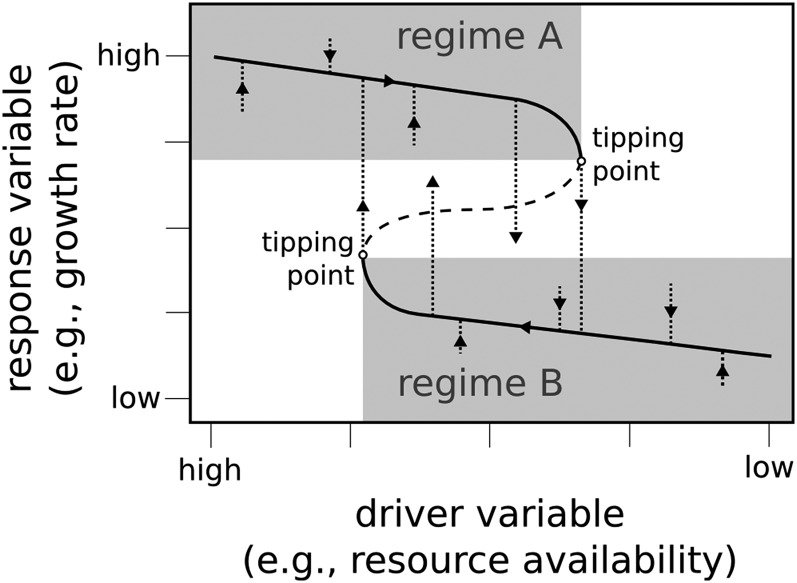Fig. S2.
Conceptual fold bifurcation model for human population collapse. We consider that bifurcation acts on population growth rates. Reading the graphic from left to right, early agricultural societies have initially high growth rates. Land degradation slowly drives the growth rates down, whereas agricultural surpluses and cultural mechanisms maintain the growth rates at artificially high levels within growth regime A. As the system approaches the tipping point, it becomes increasingly unstable and susceptible to shifts into the low growth-rate regime (regime B). The system exhibits hysteresis insofar as the recovery of agricultural productivity does not necessarily result in recovery of the higher regime A growth rates.

